MIIT Addresses Hidden Door Handles: What Other Frivolous Features Need Regulation?
![]() 05/12 2025
05/12 2025
![]() 620
620
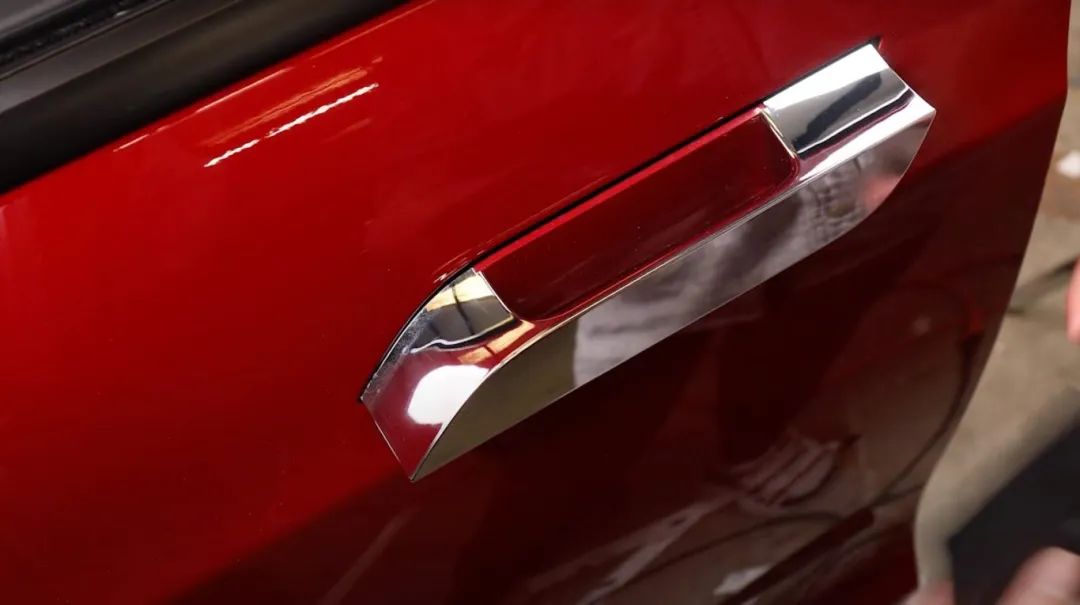
Introduction
"Pseudo-technological" and "immature" features lack respect for the automotive industry. Rather than advancements, they resemble marketing ploys. These features are not only unnecessary but can also jeopardize user safety and require regulation.
"It took me forever to figure out Tesla's door handle. I had to use it like a seesaw. Another electric car also had a hidden door handle, and I stood by the door for ages before it popped out."
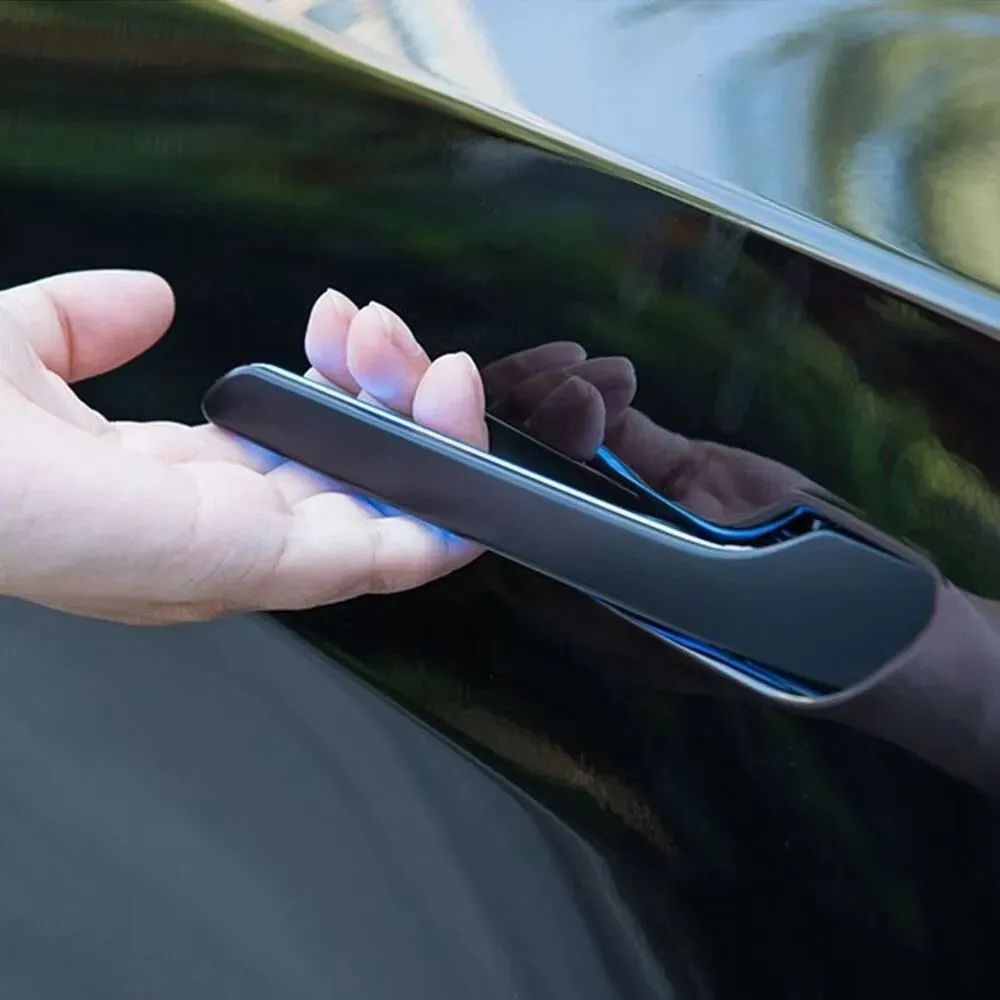
Xiao Yuan complained to her friends about the inconvenience of hidden door handles during an online car-hailing ride. "You won't have to worry about it anymore," one friend laughed, sharing the previous day's news: the MIIT is addressing hidden door handles.
In recent years, hidden door handles have become increasingly common in new energy vehicles. However, cases where the handles fail to open after a collision or are difficult to open in cold temperatures have drawn consumer criticism.
On May 8, the MIIT's official website solicited public opinion on the revision plan for the mandatory national standard "Technical Requirements for Safety of Automobile Door Handles." This move sparked widespread discussion on "hidden door handles" and other "frivolous features" among both industry insiders and consumers.
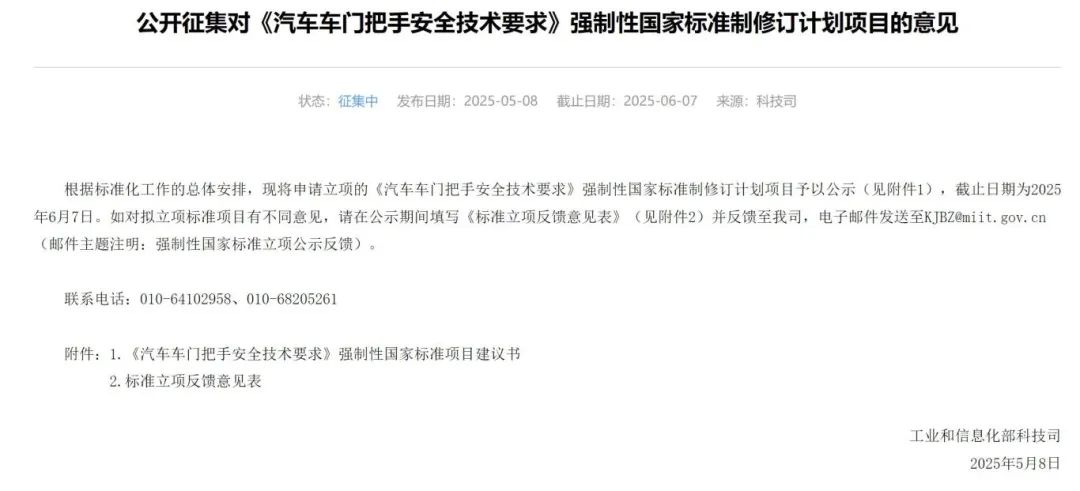
In the comments section of the photo news published by "Auto Community," features such as panoramic sunroofs, full-screen displays without physical buttons, and overly bright headlights were also heavily criticized, in addition to hidden door handles.
Hidden door handles have been around for over 70 years, since luxury brands first experimented with them in the 1950s. However, comprehensive and reliable standards have long been lacking. On one hand, hidden door handles and other "frivolous features" often boast sleek design and a sense of technological advancement, marketed as cutting-edge designs. On the other hand, they have shortcomings in ergonomics, safety guarantees, and relevant standards and regulations.
Hidden door handles and similar features have been denounced as "pseudo-technological" and "immature," with the core contradiction lying in the imbalance between form and function. Essentially, they fail to respect the automotive industry, serving more as marketing ploys than technological advancements. They are not only unnecessary but may also jeopardize user safety.
The MIIT's "intervention" aims to address this core contradiction and bring automotive technology and features back on track, focusing on user safety and convenience.
Addressing the root cause has become an inevitable path for the industry's maturity.
01 The Gateway to Safety, the Hand to Correct
"In fact, hidden door handles were first used in the 1952 Mercedes-Benz 300 SL model as a design novelty for luxury cars. Under the application background at that time, they were niche and did not cause significant negative impacts," an industry expert told Auto Community reporters.
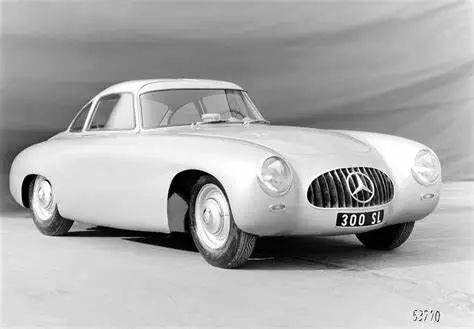
Hidden door handles are praised for their aesthetic design, which avoids disrupting the car's overall curve and helps reduce wind resistance. Therefore, after their introduction, they were only adopted by a few models like the Nissan GT-R and Mercedes-Benz SLS AMG, almost all of which were supercars or ultra-luxury models.
As the automotive industry enters the stage of electrification and intelligent transformation, led by Tesla, many brands have widely adopted hidden door handles, citing technological appearance, reduced wind resistance, and marketing ploys. Three main types have emerged: press-to-eject, electronically controlled eject, and touch-sensitive.
· Tesla Model S represents the electronically controlled eject type, with a motor inside the car that automatically ejects after unlocking and hides after locking. Some Tesla users argue that "all Teslas have mechanical hidden door handles," which ignores Tesla's high-end models.
· Tesla Model 3 and Model Y are typical examples of mechanical press-to-eject handles. Pressing a specific area of the handle causes the other end to pop up. For convenience, users often operate with both hands.
· Touch-sensitive hidden door handles are triggered through methods like capacitive sensing and require users to touch a specific area of the handle. They are adopted by most domestic new energy vehicle manufacturers.
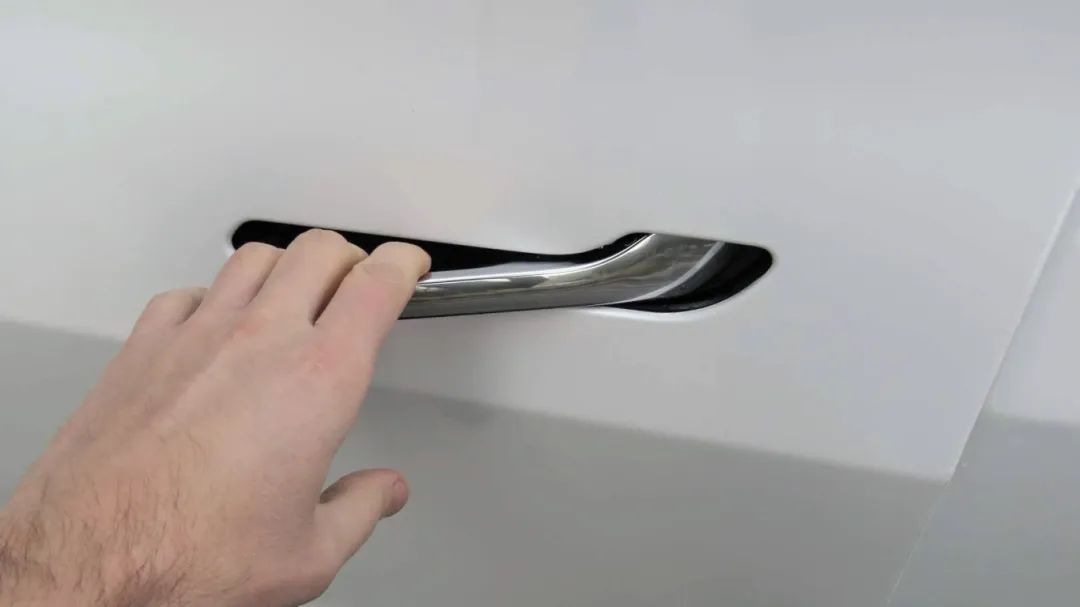
However, due to the long-term lack of domestic and international regulations and standards for hidden door handles, this feature often fails in extreme scenarios, exposing flaws such as high learning costs, inconvenience in finding and operating, failure after power loss, and safety risks in control logic.
The "Technical Requirements for Safety of Automobile Door Handles" issued by the MIIT was drafted by entities such as China Automotive Technology and Research Center Co., Ltd., Geely Automobile Research Institute (Ningbo) Co., Ltd., and Beijing Chehexia Automobile Technology Co., Ltd. (parent company of Li Auto).
According to the "Technical Requirements for Safety of Automobile Door Handles," the aforementioned issues pose potential risks to escape and rescue. For example, in accidents like collisions and fires, power failure may occur, causing electric exterior door handles and electric interior door handles to fail, thereby increasing obstacles to rescue and escape; the lack of obvious and uniform signs increases the difficulty of emergency operation.
There have been cases of casualties caused by defects in hidden door handles in traffic accidents both domestically and internationally.
As mentioned, the Tesla Model S uses electronically controlled eject hidden door handles, which led to a fatality in a traffic accident in 2019. In the high-speed collision fatality accident involving Xiaomi's SU7 in March this year, the hidden door handles failed to open in time, becoming a focus of industry attention and discussion.
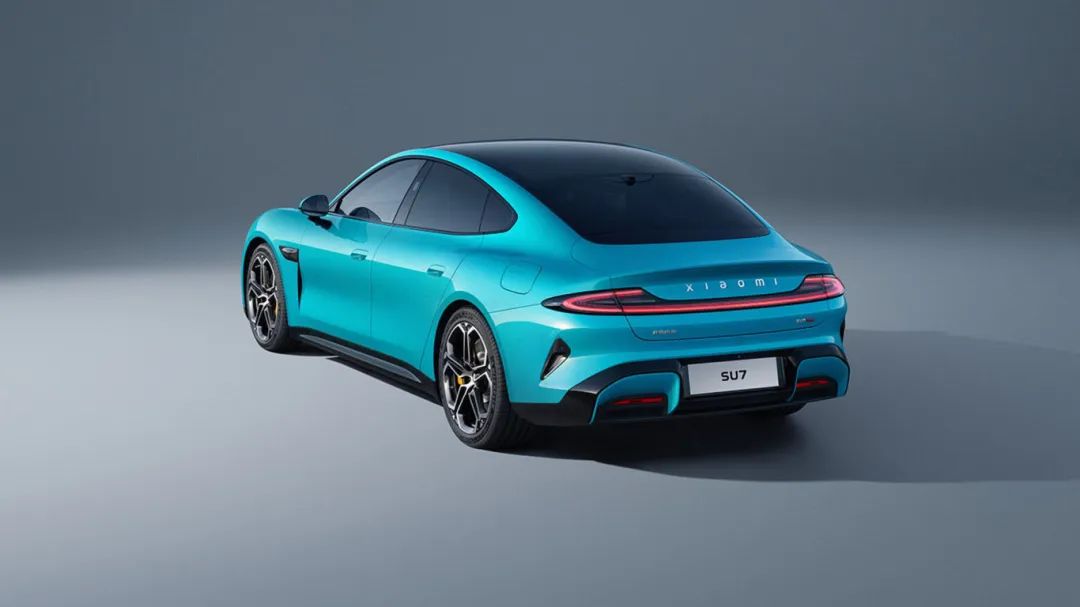
Therefore, the "Technical Requirements for Safety of Automobile Door Handles" emphasizes:
· From the perspective of rescue and escape, strengthen the safety logic of exterior door handles in accident scenarios like collisions and vehicle fires, and add safety redundancy design requirements such as mechanical or power-off protection to ensure that the door system can be opened in accidents like power failure and collisions, thereby facilitating rescue and escape activities.
· Ensure that in rollover and fall accidents, the misoperation of door handles can be prevented, thereby reducing the risk of occupant fall.
· Standardize easily recognizable safety signs for hidden interior door handles and emergency interior door handles to ensure sign visibility, thereby reducing the difficulty of occupant escape in emergencies.
· Ensure the structural strength of the door handles to prevent the loss of function of the door lock operating mechanism after an accident.
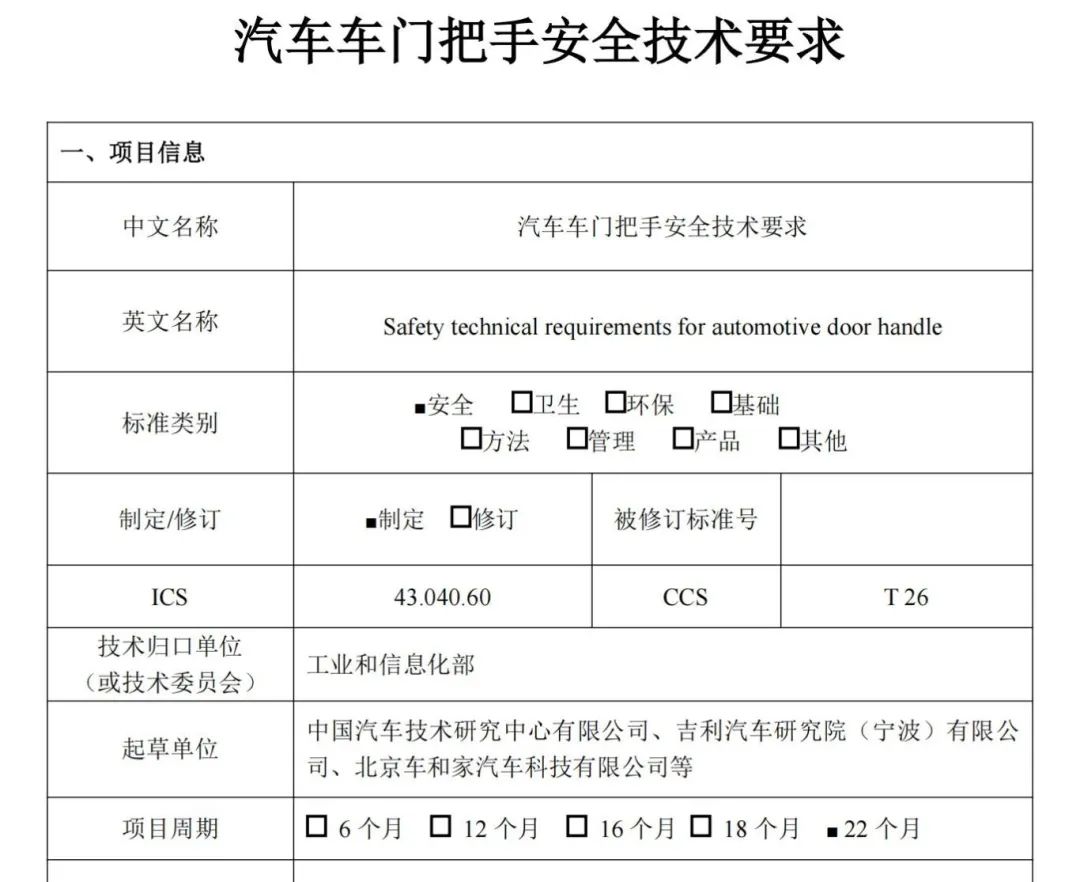
In fact, safety guarantees are the core of all automotive features that cannot be ignored. "Gilding the lily" requires a solid foundation and must not prioritize form over function.
02 Frivolous Features, Urgently Need Regulation
On May 9, Auto Community received hundreds of reader comments in the comment section of its quick report article on the MIIT's address of hidden door handles. In a sense, this served as a platform for industry reviews and user voices.
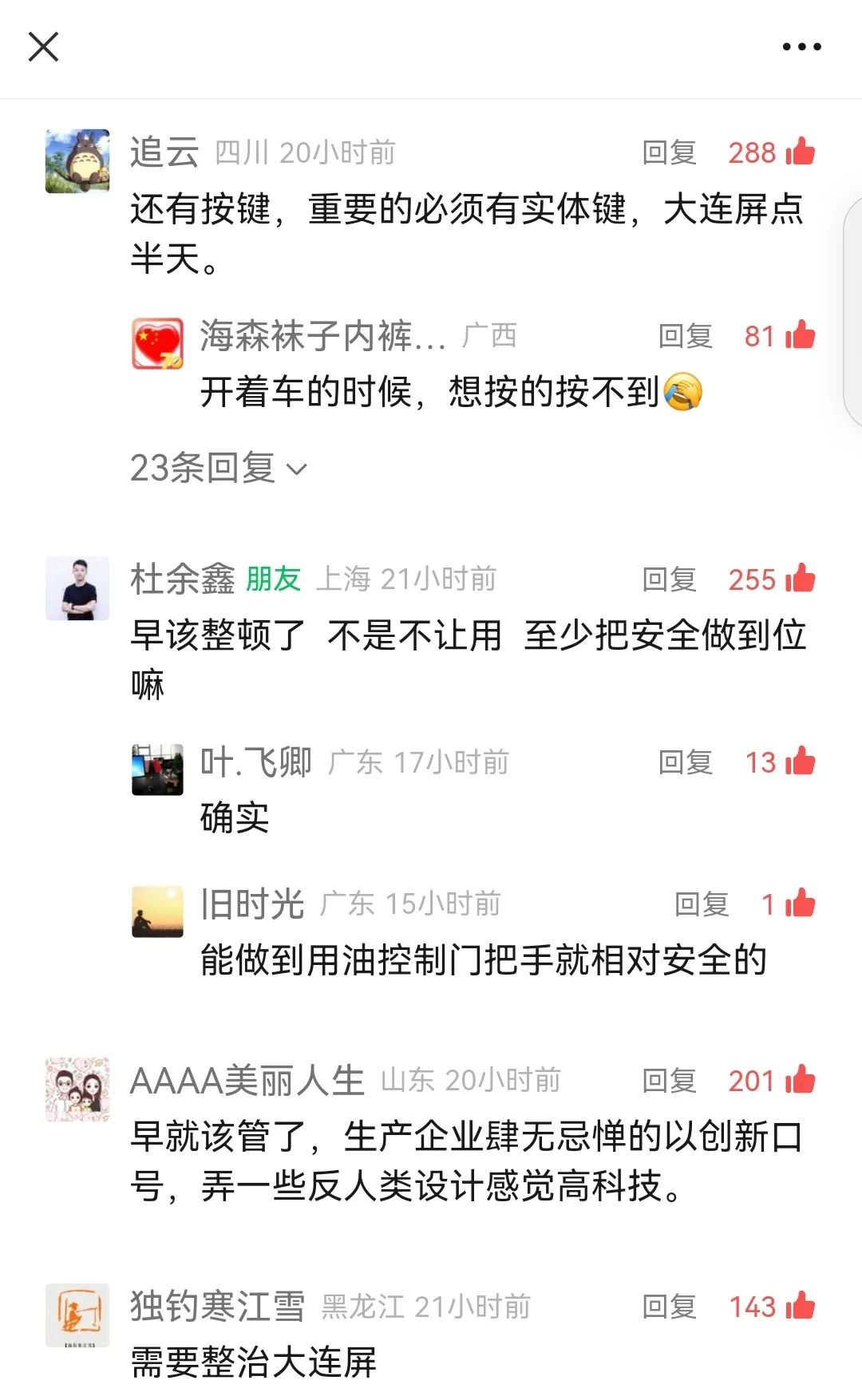
As of May 10 morning, over 200 comments highlighted the most criticized features, including panoramic sunroofs/canopies and full touch screens without physical buttons. Other features like overly bright headlights, excessive power/high horsepower, and electronic gear selectors were also mentioned by readers.
Panoramic sunroofs/canopies were mentioned most frequently. Although many brands use marketing terms like "technological sense" and "starry sky ceiling" to enhance their appeal, actual use has revealed issues like poor heat insulation, susceptibility to cracking, and high maintenance costs. During summer, the car's interior temperature soars, and even with a sunshade, it's still challenging to avoid the "steamer" experience. Additionally, the replacement cost of the canopy glass can easily exceed ten thousand yuan, and the risk of water leakage due to aging seals persists.
Some users have called on automakers to include physical sunshades as standard equipment or strengthen glass safety standards to avoid "sacrificing comfort for appearance."
Full touch screens and the absence of physical buttons were similarly criticized. Unlike panoramic sunroofs, which affect the experience, the complete elimination of physical buttons poses an invisible threat to driving safety.
The "de-buttonization" trend led by Tesla integrates functions like air conditioning and lighting into the central control screen, enhancing the technological feel but increasing the risk of distraction during driving. Especially in emergencies, the delay and difficulty of blind operation of touch controls may lead to accidents.
Regarding the "need for horsepower control," it has been widely discussed since the Xiaomi SU7 accident in March. Professionals generally believe that high-horsepower rear-wheel-drive vehicles require driver skill and should have additional thresholds. Last month, Xiaomi implemented a "horsepower limit OTA" for the SU7 Ultra, which can only fully "unlock" all power after obtaining performance recognition. This aims to improve safety but has also caused dissatisfaction among some users.
Drivers criticizing "high beam abusers" have also raised concerns about "some LED headlights being too bright" and hope to control headlight brightness to prevent safety hazards caused by glare.
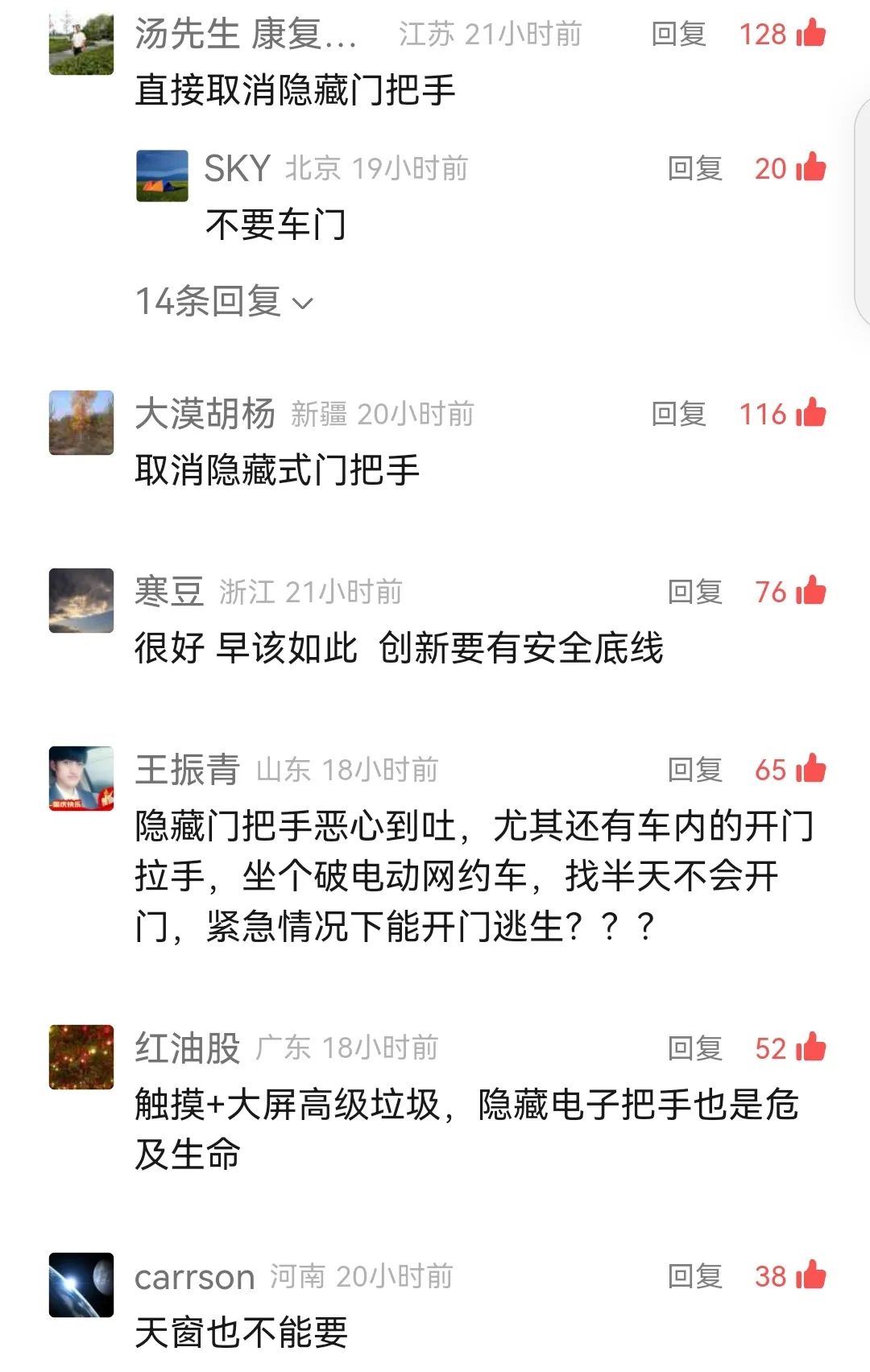
As automotive technology and features evolve, criticism of the "form over function" design mindset has deepened. The address of hidden door handles is just the beginning. The MIIT's move is not just an upgrade of technical specifications but also a reshaping of industry values – safety and practicality should always take precedence over form and gimmicks. In the rapid development of intelligentization and electrification, automakers need to be vigilant against "innovation traps" and avoid making users pay for "pseudo-demands."
Future competition will hinge on "core function reliability" and the "true value of user experience." Only by returning to the essence can one remain invincible under both policy and market scrutiny.
Editor-in-Charge: Shi Jie, Editor: Chen Xinnan








